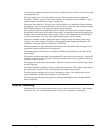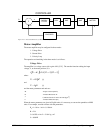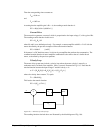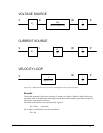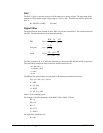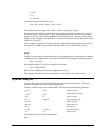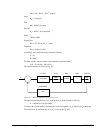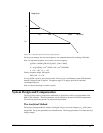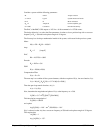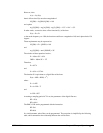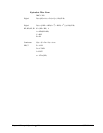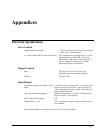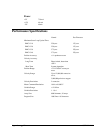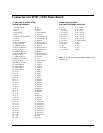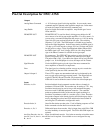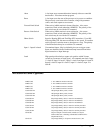
Chapter 10 Theory of Operation • 168 USER MANUAL
Consider a system with the following parameters:
K
t
Nm/A Torque constant
J = 2.10
-4
kg.m
2
System moment of inertia
R = 2
Ω
Motor resistance
K
a
= 2 Amp/Volt Current amplifier gain
N = 1000 Counts/rev Encoder line density
The DAC of theDMC-13X8 outputs +/-10V for a 16-bit command of +/-32768 counts.
The design objective is to select the filter parameters in order to close a position loop with a crossover
frequency of ω
c
= 500 rad/s and a phase margin of 45 degrees.
The first step is to develop a mathematical model of the system, as discussed in the previous system.
Motor
M(s) = P/I = K
t
/Js
2
= 1000/s
2
Amp
K
a
= 2 [Amp/V]
DAC
K
d
= 10/32768 = .0003
Encoder
K
f
= 4N/2π = 636
ZOH
H(s) = 2000/(s+2000)
Compensation Filter
G(s) = P + sD
The next step is to combine all the system elements, with the exception of G(s), into one function, L(s).
L(s) = M(s) K
a
K
d
K
f
H(s) =3.17∗10
6
/[s
2
(s+2000)]
Then the open loop transfer function, A(s), is
A(s) = L(s) G(s)
Now, determine the magnitude and phase of L(s) at the frequency ω
c
= 500.
L(j500) = 3.17∗10
6
/[(j500)
2
(j500+2000)]
This function has a magnitude of
|L(j500)| = 0.00625
and a phase
Arg[L(j500)] = -180° - tan
-1
(500/2000) = -194°
G(s) is selected so that A(s) has a crossover frequency of 500 rad/s and a phase margin of 45 degrees.
This requires that
|A(j500)| = 1
Arg [A(j500)] = -135°



